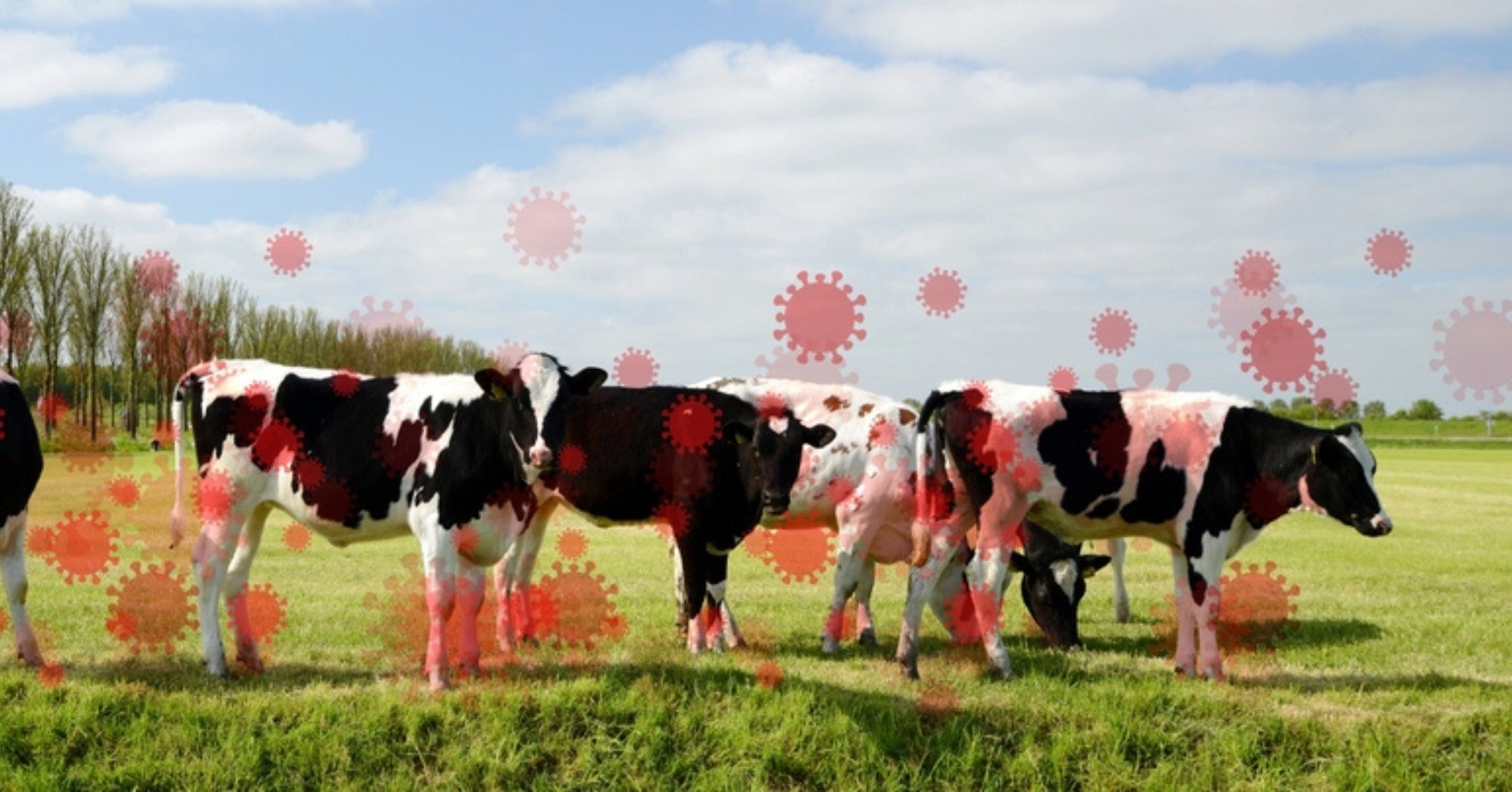Government agencies are struggling to monitor and respond to highly pathogenic avian influenza, which is echoing the early months of the COVID pandemic.
It’s been about five months since the Texas Department of State Health Services announced that a worker on a dairy farm had tested positive for the highly pathogenic avian influenza A (H5N1) virus after being exposed to apparently infected cattle. Since then, the U.S. public health response has been slow and disjointed, bringing back memories of how the federal government responded during the early phase of the COVID-19 pandemic.
Despite having a pandemic playbook in early 2020, the U.S. appeared flat-footed in its response to COVID-19, including inadequate testing and unavailable personal protective equipment. And throughout the pandemic, mixed messaging on masks and later vaccines set back public health efforts.
As H5N1 circulates, it seems that lessons from COVID-19 remain unlearned. It appears that missteps are being made regarding testing, surveillance, transparency, and failure of communication and coordination throughout the health care system, the same kinds of things that hurt the response to COVID-19.

“The World Health Organization,” according to NPR, “considers the virus a public health concern because of its potential to cause a pandemic.” What may be concerning is that the genetic sequence of the Spanish flu that killed between 50 and 100 million people from 1918 to 1919 was later found to be an H1N1 virus that originated in birds and then somehow adapted to humans. And based on confirmed cases, the case fatality rate could be as high as 50 percent, as over the past two decades roughly half of about 900 people around the globe known to have contracted bird flu died from it. (There are two caveats, however: Due to limited testing, there were likely more cases that were undetected which would lower the mortality rate. And in the last two years, the global case fatality rate seems to have decreased.)
As of Aug. 30, the U.S. Department of Agriculture reports that 196 dairy cow herds in 14 U.S. states have confirmed cases of avian influenza.
There have been 14 reported cases in humans since 2022, all of whom were exposed to cattle or poultry, and reports suggest that there may be even more sick farm workers who haven’t been tested. There’s no evidence the virus has started to spread among people, but that could change as the situation evolves. The possibility of spillover is always of concern to experts. One of two main competing theories of coronavirus origins and how it evolved into a human-to-human transmissible infection is zoonotic transfer from mammals sold at a wet market in Wuhan, China, to humans.
Agriculture Secretary Tom Vilsack declared at a news conference in June that his department “is trying to corner the virus,” while releasing a report that human activity is a conduit to bird flu being transmitted between animals when workers, cows, vehicles and equipment move between farms.
But experts have voiced sharp criticism of the U.S. government’s response, especially around the lack of comprehensive surveillance efforts to ascertain the extent of the outbreak. When interviewed by KFF Health News, Jennifer Nuzzo, director of the Pandemic Center at the Brown University School of Public Health said, “We’re flying blind.” Without sufficient testing, it’s impossible to know how many animals and humans have been infected or whether the virus has begun to spread between people.
As could have been learned from the Covid-19 experience, integral to conventional approaches to curbing transmission of infectious diseases is a comprehensive set of track, isolate, and contact trace policies. These have not been systematically implemented.
Without a collective effort across all states, there’s nothing to stop avian flu from spreading around the country.
Michigan stands out as a state with a robust policy to track human and animal infections and investigate which activities pose the most risk. First, the state’s chief medical executive told STAT, Michigan tested more individuals this spring than any other state. And then the Department of Health and Human Services in Michigan launched a pioneering effort to detect asymptomatic (silent) bird flu infections among farmworkers. Furthermore, a press release from the Michigan Department of Agriculture and Rural Development notes that under state rules dairy and commercial poultry producers must implement biosecurity practices, which include establishing cleaning and disinfection protocols at access points for individuals and vehicles.

Investigators believe the virus may have begun to spread in Michigan when workers operating multiple dairy and poultry operations came in close contact with infected cows and moved from one farm to another.
In April, the USDA issued a federal order requiring testing before lactating dairy cattle can be moved across state lines. Michigan, along with nearly two dozen other states, has also issued its own restrictions. But without a collective effort across all states, there’s nothing to stop avian flu from spreading around the country.
Furthermore, how effective can containment be when the USDA’s order only requires testing for bird flu in lactating cows prior to interstate movement, and no other types of animals?
One of the challenges in managing any major outbreak is the question of who’s in charge to coordinate across departments, such as Health and Human Services, Agriculture, and Commerce. For the purpose of inter-department coordination, the Biden administration launched an Office of Pandemic Preparedness and Response Policy in 2023.
Among federal agencies, the CDC (housed within the Department of Health and Human Services) appears to be the most actively involved in coordinating state efforts. It has provided assistance for a seroprevalence study in Michigan, to assess whether asymptomatic infections are present in people, for example.
But despite these efforts, there’s lack of clarity around who has jurisdictional authority over what and where. Rick Bright, a virologist and immunologist and former head of the Biomedical Advanced Research and Development Authority, explained to CNN why he thinks that a more transparent and comprehensive approach to testing and genetic sequencing is needed. He’s concerned that viral adaptations can occur if there are enough opportunities through uncontrolled spread.

The CDC does now have a roadmap, which it announced for preventing and understanding human infection with bird flu and a plan to develop countermeasures. The roadmap’s main objectives include infection prevention by deploying PPE; examination of primary modes of transmission and estimates of incubation periods, duration of infection and severity; monitoring of genetic changes in the virus; and evaluating vaccines and antivirals. CDC Director Mandy Cohen said lessons from Covid-19 have been learned and that CDC is building upon them, for instance, through its wastewater surveillance efforts.
The CDC’s ability to implement these lofty goals may be hampered, however, by seemingly limited resources. The federal government has pledged only modest new funds this year of approximately $200 million to help track and contain H5N1. Separately, the government is allocating $176 million in Moderna to develop an mRNA vaccine against H5N1.
And conspicuously absent are concrete plans, such as how to deploy the stockpile of 10 million doses of avian flu vaccines the federal government currently has as well as the inventory of the antiviral Tamiflu (oseltamivir). By contrast, Finland is now offering vaccines to farmworkers.
The CDC’s ability to implement these lofty goals may be hampered, however, by seemingly limited resources.
Aside from inadequate funding and preparation, there’s a problem of overcoming public distrust. A survey published in Health Affairs suggests that about 42 percent of American adult respondents in early 2022 said they had confidence in the CDC to provide quality health information during the Covid-19 pandemic, while about a third said they trusted state and local health departments. This may partly explain why the CDC is now having trouble getting farmers to cooperate with even rudimentary tracking and mitigation efforts regarding H5N1.
Lessons from the history of how Covid-19 unfolded underscore the importance of not being complacent in the face of a potential future bird flu pandemic. It would seem imperative to take proactive measures such as systematic testing of animals and humans exposed to the virus, mitigate transmission risk in the dairy and poultry industries, and coordinate federal and state responses.
This article was originally published on Undark. Read the original article.
![]()


